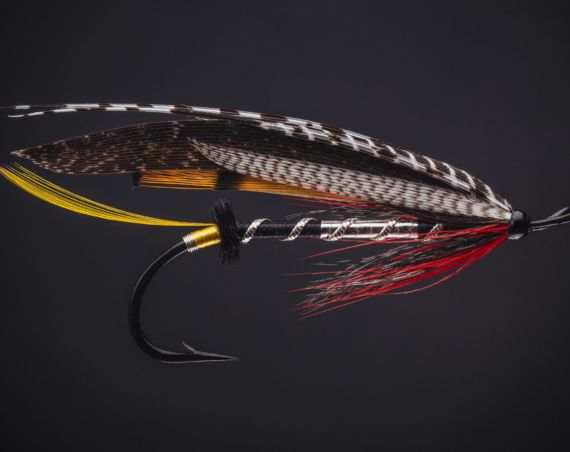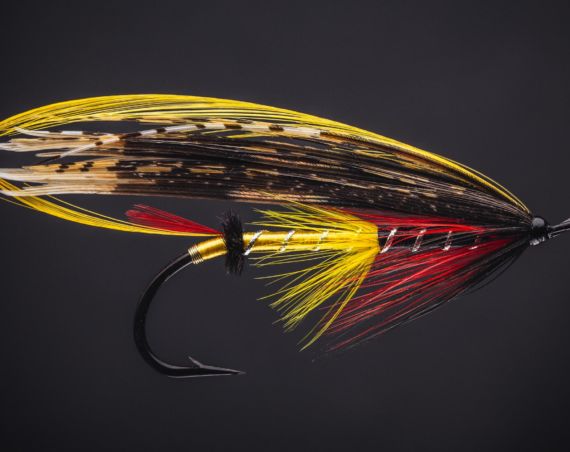Lady Caroline Spey Fly
Here’s a video of me tying a Lady Caroline which is a classic Spey fly although it differs from most Spey flies by having a tail. It still became one of the popular Spey flies and is widely used today.
The fly is named after Caroline Elizabeth Gordon-Lennox who lived 1844-1934. Lady Caroline was most likely designed and tied by George Shanks who at the time served as the head ghillie at the Gordon Castle. The same Shanks whose flies were featured in A.E. Knox’s Autumns on the Spey.
There are many ways to tie the Mallard wings on a Spey fly but most widely used in the vintage flies is the “reversed wing” where strips from the left side of the feather are tied on the far side and vice versa. This way the shorter fibers are on the top of the wing. I decided to do it the other way because with the tail and all I think it flows nicely as a sort of a mix between Spey and a strip wing Salmon fly. The wing length is also crucial. On a typical Spey fly you’d want the wing to be the length of the body or even slightly shorter. So mine is maybe a bit too long but I’ll blame it on the same strip wing/Spey fly theory.
Here’s the pattern from Kelson’s The Salmon Fly that I tried to follow.
Lady Caroline
Tail: Golden Pheasant red-breast, a few strands only.
Body: Brown and Olive-Green Berlin wool mixed together in proportion of one part Olive-Green and two parts Brown.
Ribs: From separate starting points, of gold tinsel (narrow), gold twist, and silver twist, wound the usual way, an equal distance apart.
Hackle: Grey Heron, from tail (tied in at the point as usual) wound alongside gold tinsel.
Throat: Golden Pheasant red-breast, two turns.
Wings: Two strips of Mallard showing brown points and light roots.
An old standard Spey fly.



